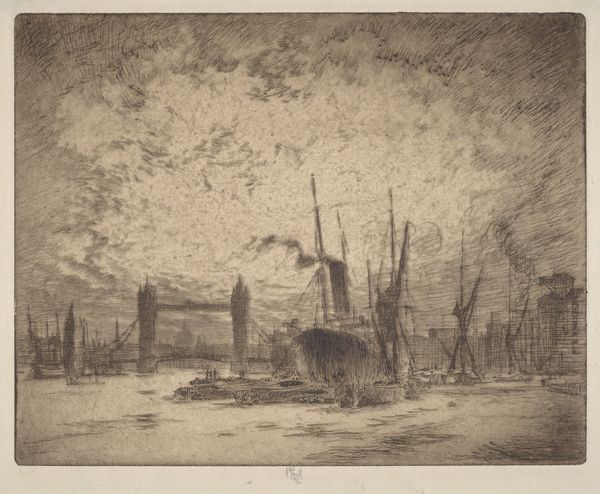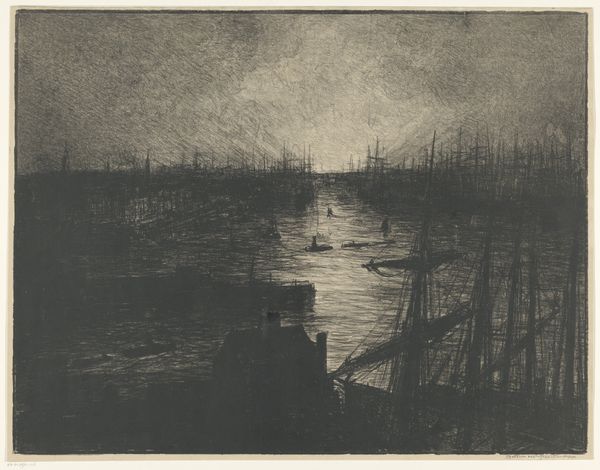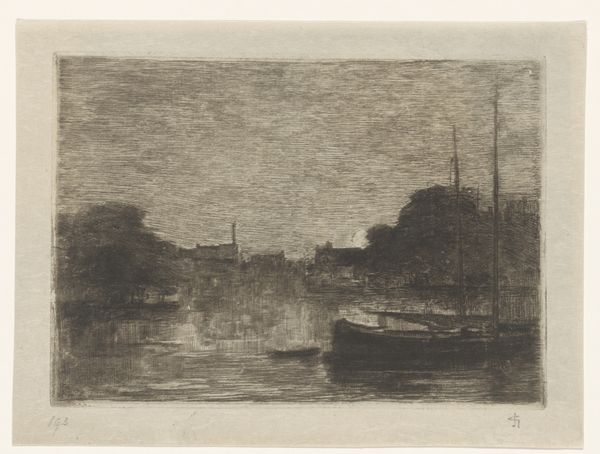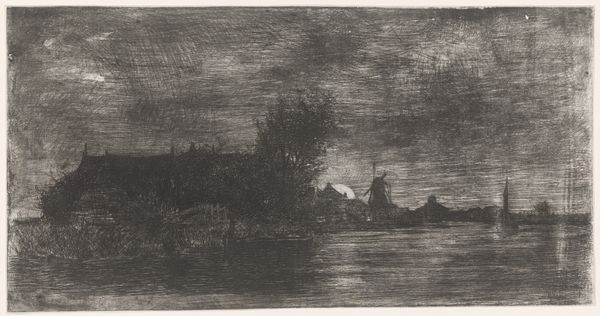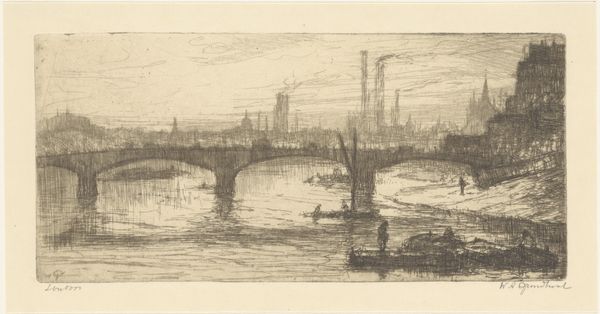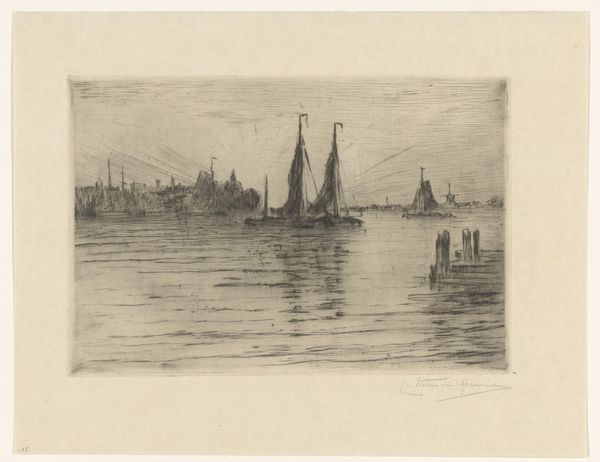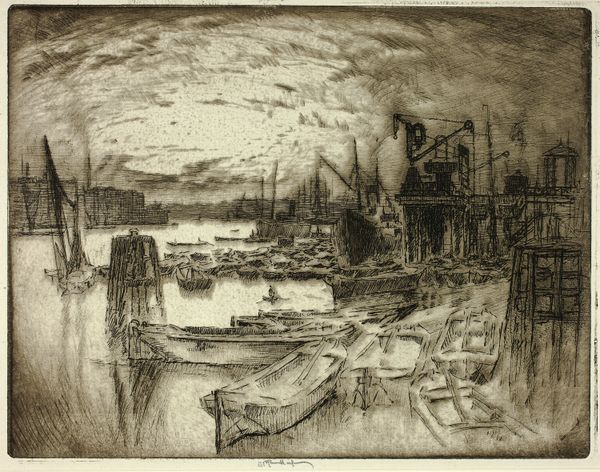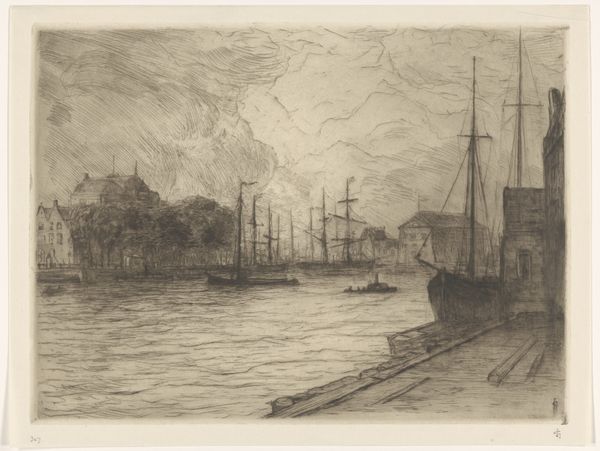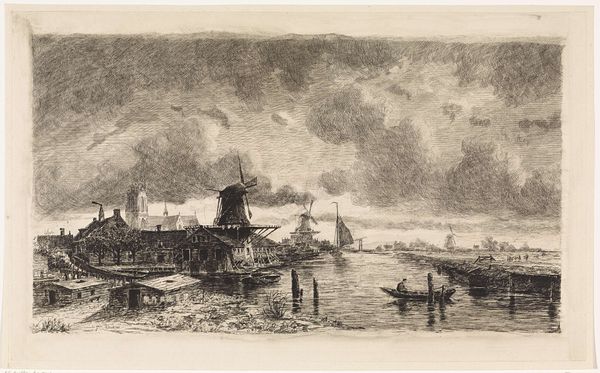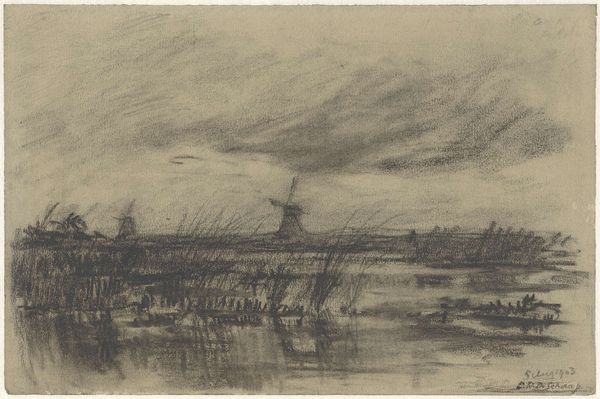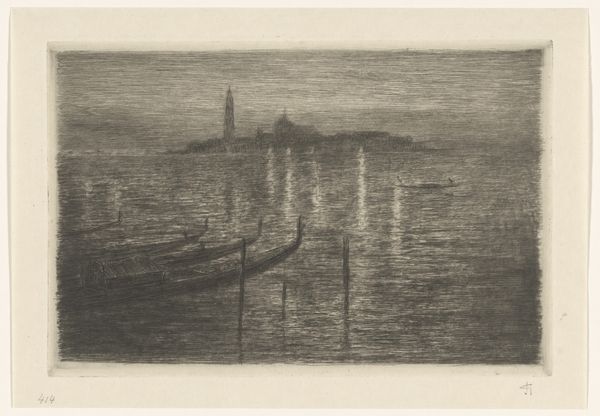
etching
#
ink painting
#
dutch-golden-age
#
etching
#
landscape
#
river
Dimensions: height 277 mm, width 456 mm
Copyright: Rijks Museum: Open Domain
Editor: So, here we have "River Landscape with Village and Wood Saw Mill," an etching from 1888 located at the Rijksmuseum. It's wonderfully atmospheric, with this dramatic, almost ominous sky. How do you interpret this work, especially with all those symbolic details? Curator: It’s an etching saturated with the weight of the Dutch Golden Age, yet created much later, when that age was idealized. What memories and aspirations are being encoded and repeated in its iconography? I am especially struck by the windmills. They're so central, looming, powerful. What do windmills signify here beyond simple industry? What kind of visual cues are present to trigger a cultural connection, a sense of identity for Dutch viewers of the time, and today? Editor: I hadn't really thought about the windmills as symbols beyond the obvious Dutch connection, the “Dutchness” of it all. It’s fascinating to consider that an 1888 artist, removed from the Golden Age, is deliberately conjuring those symbols. What else in the image seems intentionally symbolic, or open to multiple interpretations? Curator: The river itself. Water has so many connotations – passage, life, trade, reflection. In conjunction with the mills, one might contemplate the ebb and flow of economic prosperity, the power harnessed and then perhaps lost. Does the relative darkness of the scene suggest decline or the possibility of renewal? Also, the solitary boat. Who are those figures? Is it just commerce or is it about individuals navigating changing times? It’s like looking at collective unconsciousness. Editor: That really broadens my perspective. The solitary boat suddenly seems heavy with meaning. I guess I was initially drawn to the landscape aspect, but seeing it as a visual representation of cultural memory shifts everything. Curator: Precisely. Art becomes a powerful mirror, reflecting our anxieties and aspirations back at us through familiar forms, prompting continuous conversations across generations. We actively re-interpret history based on where we stand in time and our social or emotional concerns. Editor: I will certainly look at art differently now! Thanks so much!
Comments
No comments
Be the first to comment and join the conversation on the ultimate creative platform.


